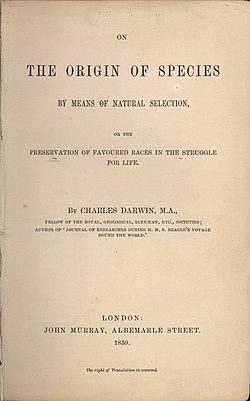An alternative title or alternate title in book publishing refers to a title that is presented alongside the primary title. It often uses a semi-colon or the term "or" in book titles, typically seen in the form "Title: or, Subtitle." [1] [2] This was a practice that started in the 17th century, and was common in both English and American literature. During this period, many books aimed to appeal to a broader audience by using more descriptive subtitles.[ citation needed ]

As an example, Mary Shelley gave her most famous novel the title Frankenstein; or, The Modern Prometheus, where or, The Modern Prometheus is the alternative title, by which she references the Greek Titan as a hint of the novel's themes. [3] More examples are On the Origin of Species by Means of Natural Selection, or the Preservation of Favoured Races in the Struggle for Life and Moby-Dick; or, The Whale. This is contrasted to a subtitle, which is a portion of the title itself. [1] The subtitle is considered to add extra explanation for the title. [4]
This convention started to decline in the 19th century as book titles became more concise and marketing strategies evolved. [4]